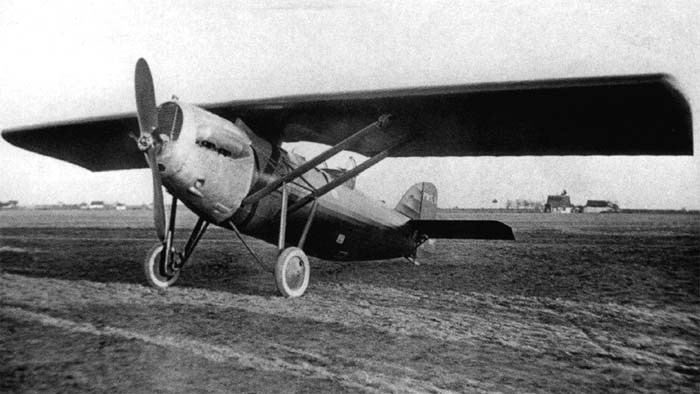Top speed 232 km/h Length 8.7 m | Wingspan 14 m | |
 | ||
Manufacturer | ||
The PWS-1 was a Polish two-seat fighter and reconnaissance aircraft, constructed by Podlaska Wytwórnia Samolotów (PWS) in 1927, which remained a prototype.
Contents
Design and development
The PWS-1 was the first design of the Podlaska Wytwórnia Samolotów (Podlasie Aircraft Factory), and the second aircraft designed and built in Poland, after the CWL WZ-X. It was conceived as a single-engine high-wing two-seat fighter, a main purpose of which was the escorting of bombers. Design work was carried in 1926 by Zbysław Ciołkosz and Aleksander Grzędzielski, under direction of Stanisław Cywiński.
After static tests, the prototype first flew on 25 April 1927 in Biała Podlaska. Tests revealed poor manoeuvrability, its speed was also low due to a thick wing, despite STOL capability.
In 1928 the aircraft was reworked, receiving a new, lighter, straight wing of thinner profile and duralumin construction instead of a wooden, slightly swept one. It also received an enormous vertical stabilizer of rectangular shape with rounded top. After modifications it was flown in early 1929, under a designation PWS-1bis. Its performance improved, but because of its relatively low speed compared to other fighters, its primary role was changed to reconnaissance. Development was however discontinued, because it had little payload, and in a meantime Poland had bought large numbers of better Breguet 19 and Potez 25 reconnaissance and bomber aircraft.
Description
High-wing parasol braced monoplane of mixed construction, with single engine. A fuselage of a steel frame in front and wooden frame in the rear, covered with canvas and duralumin in engine section. Slightly swept wing of wooden construction, plywood and canvas covered, two spar (PWS-1) or straight duralumin wing, of trapezoid-rectangular shape, two-spar, plywood and canvas covered (PWS-1bis). Stabilizers, rudder and elevator of wooden construction, canvas covered. Open pilot's cab, with a windshield, behind it an open observer's cab with two 7.7 mm Lewis machine guns on a ring mounting. Cabs had twin controls. Pilot manned two 7.7 mm Vickers machine guns fixed in a fuselage, with an interrupter gear. Conventional fixed landing gear, with a rear skid.
Engine:Lorraine-Dietrich 12Eb water-cooled inline W-12, built in Polish Skoda Works. Water radiator before the engine. Two-blade wooden propeller of a fixed pitch. Fuel tank 375 l in the forward fuselage fuselage front, jettisonable in an emergency.
Specifications (PWS-1bis)
General characteristics
Performance
Armament
2 x 7.7 mm Vickers machine guns (pilot's fixed in the fuselage)
2 x 7.7 mm Lewis machine gun (observer's on a ring mounting)
